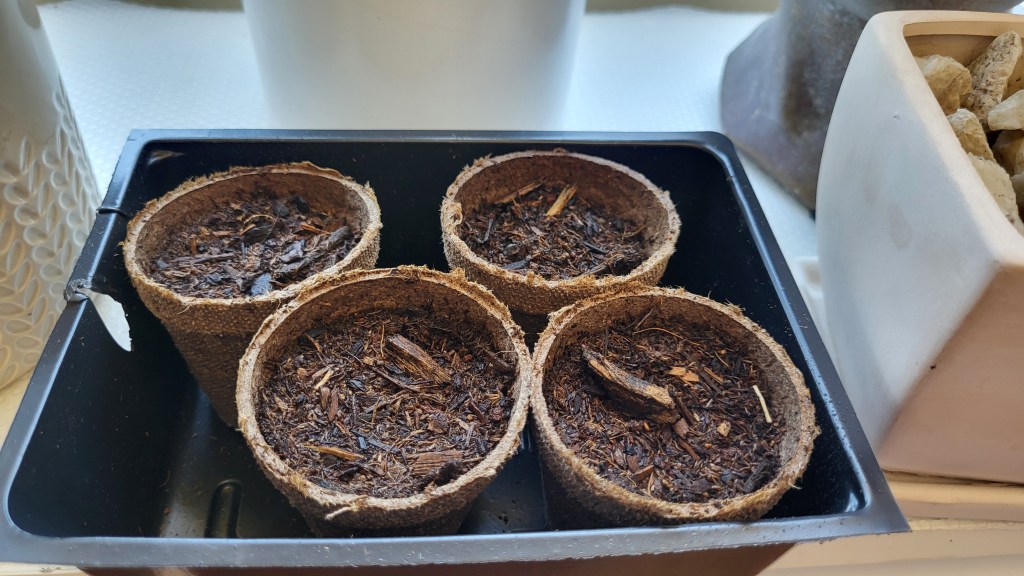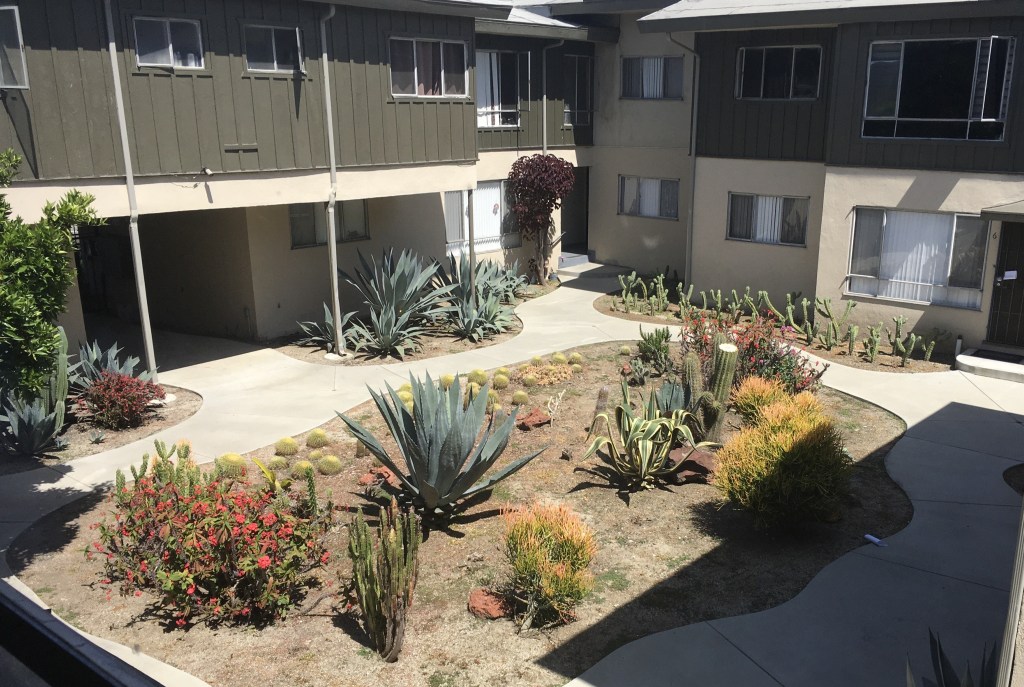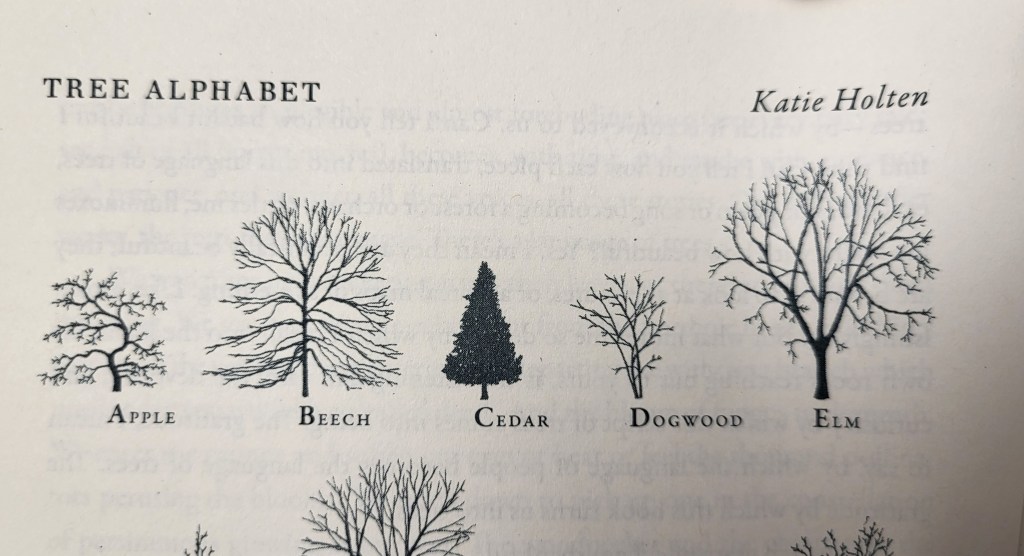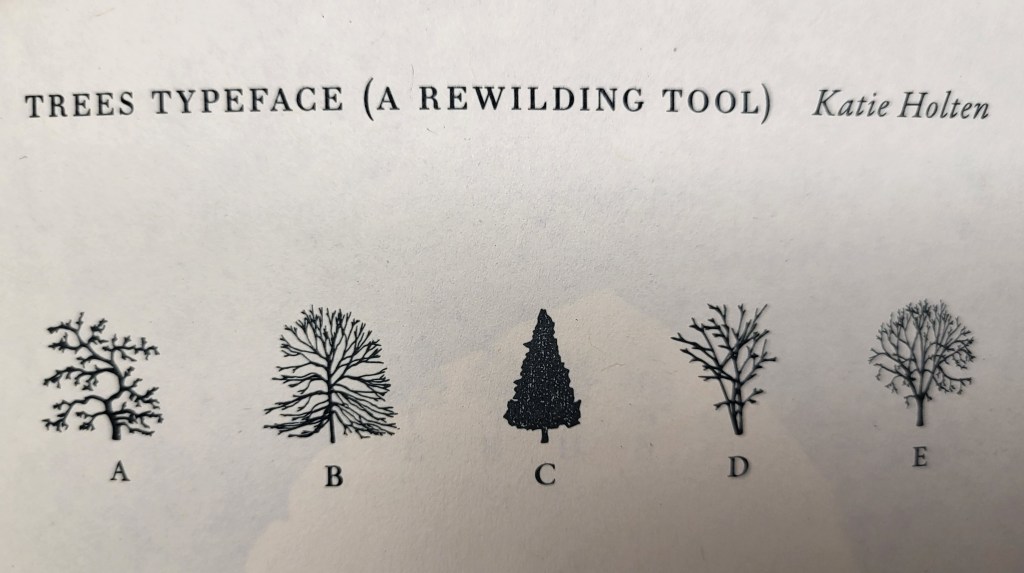
Last Monday on Earth Day I planted my little seeds (though I acknowledge Sara Wright’s point in her las post that every day is earth day!). I’m in a new apartment and don’t have the outdoor space I used to in my previous home. I live in a courtyard-facing apartment complex with a beautiful desert garden in the middle, but no outdoor space that the tenants are allowed to work in. I do, however, have a big, beautiful living room window that gets a lot of direct sunlight. For Earth Day, then, I started my little potted-plant garden. As I put together the tiny pots, pressed in the place for and placed the seeds, covered and watered them, I inevitably reflected on the magic of it all. The pots look empty except for the soil, and yet, I’m to expect lettuce from them in some weeks or months. A seeming impossibility, but it will happen—slow, but nonetheless, steady growth happens.


That week of Earth Day, two books that I bought separately happened to arrive at the same time. So there on my desk as I planted my seeds was The Language of Trees: A Rewilding of Literature and Landscape by Katie Holten (2023) and In a Human Voice by Carol Gilligan (2023). As I worked on my planting and with a clear view of these two books on my desk, I knew they belonged together.
The Language of Trees is a collection of 50 short pieces of writing from authors ancient and contemporary, living and dead, that cover topics such as seeds, soil, saplings, buds, bark, branches, leaves, trunks, flowers, fruit, forests, roots, resistance, and then Family Trees, Tree Time, Tree People, and After Trees, collectively intended for our “rewilding.” These in themselves are beautiful and are a whole education. The real gift of this book, however, is that Holmes created a graphic alphabet of trees; an alphabet that comprised of image representation of trees, such that the Apple tree stands for the letter A, the Beech tree for B, the Cedar for C…you get the idea. And each of the 50 pieces of writing begins with a reprint of the piece in the Tree alphabet. Let me show you:



It’s an extraordinary work and a powerful invitation to reconsider our relationship to nature.
Ross Gay, a writer and poet, winner of the 2015 National Book Critics Award, who writes the introduction of the book, writes that whether or not we learn to understand the language of trees is a matter of life and death:
Our capacity and willingness to learn the language of trees, to study the language of trees…might incline us to be less brutal, less extractive. It might incline us to share, to collaborate. It might incline us to give shelter and make room. The language of trees might incline us to patience. To love. It might incline us to gratitude. (xii)
And oh, how we need such virtues.
Moving to the second book on my desk, In a Human Voice, might cause you to recall Carol Gilligan’s original discipline-disruptive essay from 1977 (and later book) “In a Different Voice: Women’s Conception of Self and of Morality” (Harvard Educational Review, 47/4). In it she effectively challenged the prevailing psychological theory on moral human development, which was based only on men’s experience. Starting with women’s experience, Gilligan brought new insight to how moral development happens when looking through the lens of gender. But, with her new book, In a Human Voice, Gilligan is amending her theory.
In her original research, she found that women’s moral development needed to be understood as in a different voice, one that stemmed from an ethic of care and an assumed relationality, and not as coming from the place of an assumed sole individual making their independent moral choices, which was more often the case with men. However, she now recognizes that her conclusion was coopted into the framework of a gender binary as if her findings were simply about women and their development, and about women being “different” from men, instead of a recognition that humans are differently socialized and formed: “I witnessed a process of initiation that had been mistaken for development.”
In this new book, Gilligan clarifies something she says she is surprised took her so long to realize:
the voice of care ethics is a human voice and the gendering of a human voice as “feminine” is a problem…Hearing the “different voice” as a human voice, meant clearing away a series of impediments that stood in the way of seeing that the gender binary – the construction of human capabilities as either “masculine” or “feminine” – is not only a distortion of reality, but a cornerstone of patriarchy (vi).
I see how it makes sense that these books arrived at my desk together:
Gendering the human voice is a problem.
Objectifying the natural world is a problem.
Listening, learning, and practicing the language of care clears the way for our more humanized relationality.
It’s a matter of life and dead.
Learning the language of trees grows our capacity to share and collaborate – to be less brutal.
It’s a matter of life and dead.
This past Earth Day, with the miracle of growth buried beneath the surface, I was reminded that there is so much potential for life, rich and nourishing life, that connects human beings and other-than-human beings alike.

The reminder felt like an initiation.
I move forward with gratitude.
And as I drove home from work a couple days after Earth Day, I saw the trees differently, newly. I’m starting to learn the Tree Alphabet.


I love trees now too after falling in love with a Yew tree in Scotland. Only then did I learn why my mom had loved trees.
Beautifully written! Thank you for the book recommendations.
LikeLiked by 1 person
Thank you, Sheila. It really is the thing that one relationship, be it a Yew tree or a human, can change the way we view all others. I love that!
LikeLiked by 1 person
I love this! Very interesting about the alphabet of trees. I am studying the role of ethnobotany in the development of language and have seen a northern European version of tree alphabet. Maybe it is something that has taken place around the world so I will look forward to exploring this more. Having trees at the center of the physical town, as the materials for the home, providers of medicine or food, as hosts of important animal life, surely has contributed to environmental appreciation in the past. Now our culture is disconnected from nature comparatively. But it is beautiful how the simple act of planting can be so connecting and awakening. :)
LikeLiked by 2 people
You know your post reminds me – another way we keep ourselves separate from Nature is by calling her the environment – such an ugly word and so destructive – depersonalization is such a powerful way to keep power over – thank you for reminding me – humans forget we too are nature, though the only species still extant that has gone insane.
LikeLike
Oh, that’s awesome! If you do find out more about tree alphabets -that would be a great blog post! Because, yes, we are disconnected, really, alienated, from the rest of the natural world.
LikeLike
Oh Xochitl you DEMONSTRATE that one does not have to live in the woods to be with nature, to learn from her, to love her, to participate in LIFE (and by the way so many that do live in rural areas despise and use Her too), the hatred of nature is legion. But all one has to do as you did is to plant seeds or to develop a relationship with one plant, assume s/he’s sentient and allow her to change you – all trees and plants carry 400 million years of knowledge within and around them in fields, and s/he is only too willing to share… and today these words are a solemn reminder..”whether or not we learn to understand the language of trees is a matter of life and death” – literally for the human species… And I love how you are learning about trees…. What I love about Carol’s work is that she takes us on a journey of learning showing us how pervasive this oppressive system is and how she managed to extricate herself. Carol remains a Beacon for Life – When I miss her Monday post even now my day grows darker – a woman of amazing wisdom scholarship depth, breadth and compassion Carol also understood the ways of Nature embodying her…
LikeLiked by 1 person
Thank you, Sara! You are an exemplar of right relationship with LIFE and nature. I love how you point out that it’s not so much about where we live – city or country – in order to participate, learn from, and love nature, which we are a part of and inextricably related to. The relationship changes us. And you know this has been a growing practice for me, and it has done me so much good. Thank you for all that I learn from you too!
LikeLike
What an inspiring post! And how amazing that it took your seeds only 4 days to germinate! In the northern hemisphere, you really can see the Earth’s power of the impulse to life. My garden has sprung up with some plans growing a foot or more in just a few days. I’m reminded how many cultures have trees as part of their creation story – the Biblical Trees of Knowledge and Life, the Norse Yggdrasil tree, the Sumerian Hullupu tree – truly they are wise and sacred beings! Thank you for sharing your practice and the photos of your seedlings and garden outside your window!
LikeLiked by 2 people
Every culture I am familial with has a tree of life
LikeLiked by 1 person
Oh, I remember the miracle of those new buds after months and months of Boston winter (for me)! I remember seeing pictures of your garden in a past post – so beautiful!
LikeLike
Beautiful May Day post. Love!
LikeLiked by 2 people
Thank you, Elizabeth! It’s an especially good night to “ground” ourselves :-)
LikeLike
How wonderful that you found a way to plant seeds and grow vegetables in your apartment. Thank you so much for sharing those two books with us. The Language of Trees sound wonderful, and with the photos you shared, I’m curious about the chapter Winona wrote. She’s doing such wonderful things growing hemp. I didn’t know Carol Gilligan had written a new book. I both appreciated her acknowledgement of the different form of moral development and the ethic of care that she found by studying women’s voices in her original book, and also found it limited, finding similar voices in men, especially those who belonged to groups that have been marginalized. I’m glad to know about both of these.
LikeLike
The Language of Trees sounds fascinating, as does Carol Gilligan’s latest book. I loved her book, In A Different Voice, which I read in a Women’s Studies class in the early 2000s. I’m glad she has realized the problems with her earlier work and written In A Human Voice. Thanks for telling us about the books.
LikeLike